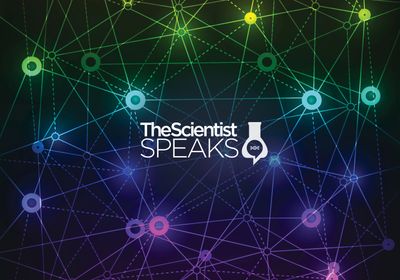ABOVE: © iStock.com, Artem_Egorov
Thanks to antiretrovirals, people living with HIV can lead long, relatively healthy lives. But even if the virus is nearly undetectable, people living with HIV are more likely to suffer from chronic inflammation than those without it, which can put them at risk of several diseases, including atherosclerosis and various neurological disorders
Now, a new study published in Cell Reports on November 22 finds that a protein produced by HIV called Nef can cause long-lasting chronic inflammation in a mouse model of HIV—and that the inflammation may persist even if the virus is totally suppressed or even eliminated. This, the researchers behind the study posit, could explain why such inflammation occurs in people with HIV.
“It’s a very nice paper,” says Mike Powell, a molecular biologist at Morehouse School of Medicine who was not involved in the study. “We’ve thought that Nef was involved in this inflammation for some time now.”
According to the study, Nef might cause long-term, genetic changes in immune cells—a phenomenon known as trained immunity. These changes “prime” the cells, so they’re constantly “on alert,” as the study authors put it, and ready to launch a strong inflammatory response against future immune challenges.
The researchers of the study, a group at George Washington University, had already linked Nef-containing exosomes—nanosized lipid packages that shuttle small molecules from cell to cell—to inflammation and cholesterol accumulation in immune cells. Still, they didn’t know how long the effect lasted.
So to interrogate that question, the researchers began by exposing human immune cells, specifically monocytes, to exosomes containing Nef. Then, after six days, the researchers introduced the cells to lipopolysaccharides (LPS), a substance commonly found on bacterial cell walls, to elicit an immune response.
The researchers found that Nef exposure triggered several proinflammatory changes in the immune cells. In response to LPS, Nef-exposed cells produced higher levels of the inflammatory cytokines TNF-α and interleukin-6 (IL-6) than cells not exposed to Nef. And RNA-seq experiments showed that Nef-exposed immune cells upregulated genes involved in cytokine and inflammatory pathways, including several interleukin-coding genes. The cells also accumulated cholesterol, forming lipid rafts, which harbor antigen receptors that can kick off inflammatory responses.
Nef appeared to induce gene expression changes epigenetically by restructuring chromatin and exposing genes linked to inflammation to the cells’ transcription machinery. However, the mechanism behind this restructuring remains unclear, according to study coauthor Michael Bukrinsky, an immunologist at George Washington University.
Burkinsky and colleagues then tested whether Nef could alter immune cells in vivo by injecting mice with Nef-containing exosomes. Then, after about a week, the scientists isolated immune cells from the mice’s bone marrow and exposed the cells to LPS. The immune cells from Nef-injected mice produced higher levels of cytokine TNF-α in response to LPS than those not exposed to Nef, similar to the results seen in vitro. This effect, the researchers found, lasted up to several months after the initial treatment, and Burkinsky says he’s unsure how long the changes last beyond that period.
The researchers also implanted irradiated mice with bone marrow from Nef-injected animals and were able to see the same effect for up to 11 weeks after implantation. This indicates that the interaction between Nef and the immune cells, and not other cells, were responsible for the long-lasting immune training phenomenon.
“To our surprise, we found that this is a very, very long long-term change,” says Bukrinsky. “The cell acquires some type of memory after seeing the Nef protein.”
The researchers say this is consistent with scientists’ existing idea of trained immunity, because the long-term genetic changes in immune cells resulted in altered responses to future, unrelated immune challenges. And given that the scientists exposed the cultured immune cells to less than half of the concentration of Nef found in the blood of HIV patients with undetectable levels of the virus, the process could feasibly occur in people with HIV, says Bukrinsky. However, they did not run any tests on human patients.
“It’s a great paper,” says Craig Bond, a molecular biologist at Morehouse School of Medicine who was not involved in the study. Bond says that researchers still find exosomes in the blood of HIV patients on antiretrovirals, and so “I would actually go a step further and make the argument that these exosomes are driving this ‘training’ effect . . . this is clearly the process that’s driving that inflammation.”
This process could also occur in other viral infections, says Bukrinsky. “It’s not clear which viruses,” elicit trained immunity. “For example, whether COVID induces this hyperreponsiveness or not is not yet clear.”
Next, the researchers want to describe the mechanism by which Nef induces trained immunity. “That’s critical for [developing] therapeutic treatments.”






